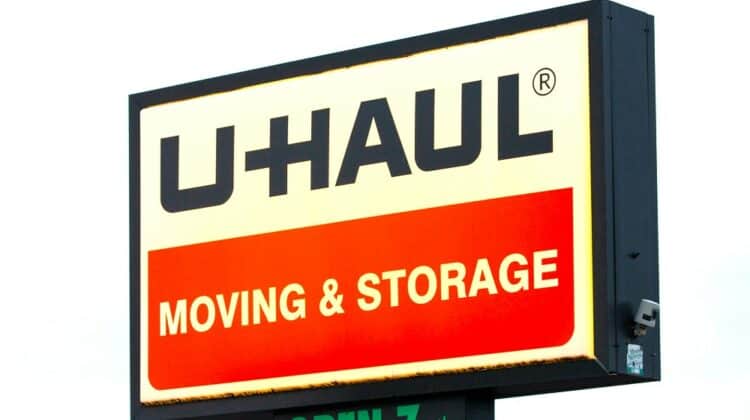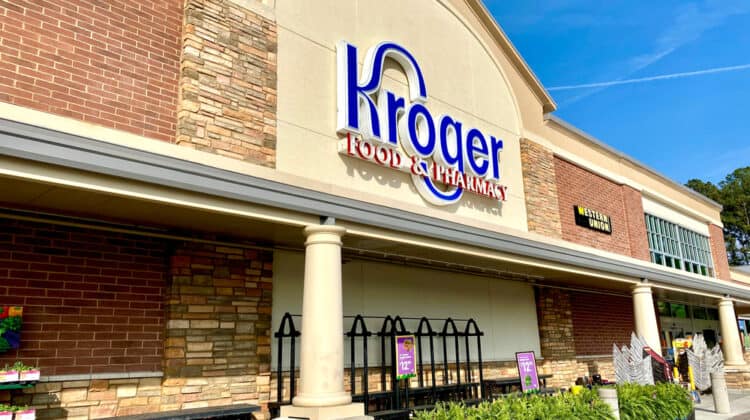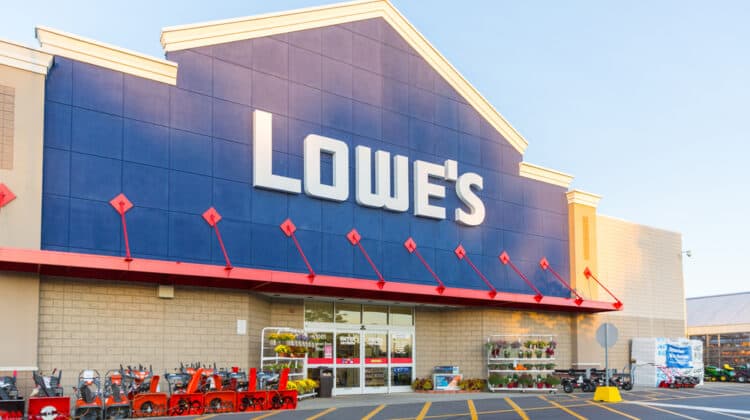
Cherries are a delicious fruit that can be the perfect topping for desserts.
They’re also a great snack on their own.
If you’re a fan of cherries, then you may have noticed that their price has become quite expensive.
Considering the size of cherries, you may wonder why they’ve become so expensive.
Why Are Cherries So Expensive? (10 Reasons)

The average price of cherries is around $5 a pound with some varieties costing even more than that.
Cherries are expensive due to their complex growing cycle, their high farming costs, weather problems impacting yields, and the fact that some varieties come from artisans.
Let’s look at these factors in more detail.
1. Seasonal Fruit

Like other types of fruit, cherries are seasonal.
They only grow during certain parts of the year.
They rely on warm temperatures to bloom.
Because the climates they grow in usually experience seasons, it means that cherries can only grow during one part of the year in each area.
For those in the United States, the summer season is when cherries typically grow.
That’s when you’ll find cherries at their cheapest prices.
They’re plentiful and local.
However, once the summer season fades, the country becomes dependent on other countries to supply it with cherries.
Since local farmers can’t grow cherries when the temperature drops, if anyone wants to buy them, they’re going to need to buy imported cherries.
The problem with imported cherries is that they’re a lot more expensive than local cherries.
That’s because suppliers of imported cherries must pay taxes in order to get those cherries into the country.
The consumer ends up paying the most since they’re covering everyone’s costs.
Cherries are generally more expensive than other fruits, but they’re especially expensive when they’re out of season.
Cherries are expensive because they’re seasonal which drives up prices in the off-season.
2. Short Harvesting Season

The fact that cherries are seasonal is only one part of the reason why they are expensive.
The other reason is that cherries also have a short harvesting season.
Farmers are able to harvest cherries between the months of April and July.
That only gives them a few months to harvest as many cherries as possible.
This means that farmers have to work extra hard to fill their crates with cherries while they can.
If they wait too long, then the cherries can rot on the tree.
They won’t be fit for human consumption.
If they pick them too early, then the cherries might not reach full maturity.
They might also not be fit for human consumption.
This makes cherries expensive because some farmers may not have enough time to harvest them.
They might find themselves with a shortage to sell because the cherries spoiled before they could get to them.
It also means it’s difficult for some farmers to grow cherries year-round.
Since they only bloom for a limited time, farmers have one shot to harvest as many cherries as they can.
Whatever they manage to pick is their harvest for the year.
To ensure their yield is worth the investment, they sell the cherries at high prices.
Cherries are expensive because they have a small harvest window which impacts their supply.
3. Hand-Harvested

One of the big costs associated with cherry farming is labor costs.
While some farmers might be able to use machines to perform some of the work, the majority of cherry farmers use human workers.
Cherries are very delicate.
They’re small and have soft skin.
As such, it doesn’t take much effort to crush or damage them.
Some machines are too strong to be able to gently pick the cherries.
Others aren’t agile enough.
They can’t carefully pick the cherries any faster than humans can since they have to overcompensate for their lack of dexterity.
The problem with human workers is that they’re quite expensive.
Since farmers need to harvest as many trees as possible, they also need to hire as many cherry pickers as possible.
Handpicking cherries also takes time.
Depending on how large the orchard is, it could take several months before the workers manage to get through it all.
Since it takes them a long time, they receive more pay.
Farmers with large orchards end up paying high labor costs which impacts their overall costs.
Cherries are expensive because labor costs are high due to the need to handpick them.
4. High Transportation Costs

Paying workers isn’t the only high cost that farmers have to face.
Transporting cherries is also quite expensive.
Because cherries are small and delicate, they often need special crates or other types of storage for their transport.
Like other types of produce, cherries also need cold storage.
Otherwise, the warm temperatures increase the rate at which they spoil.
To prevent entire crates of cherries from spoiling before they reach a store, farmers need to invest in cold storage.
Having cold storage, or even simple fortified storage costs a good deal of money.
To offset those costs, farmers need to sell their cherries at high prices.
Besides the cost of the truck and storage, farmers also need to pay fuel costs and driver wages.
Fuel costs have been climbing over the years which is making transporting products quite expensive.
Drivers have also been demanding higher wages.
With transport costs becoming more expensive, farmers are seeing smaller and smaller profit margins.
Some have to price their cherries high just to break even.
Cherries are expensive because the cost of transporting cherries is high.
5. They Require Certain Climates

You can’t grow cherries in just any climate.
Cherries are primarily grown in the northern-Midwest and northwestern areas.
A few trees also grow in Washington State and California.
Michigan is one of the country’s primary cherry growers.
The problem with many of these locations is that they experience very cold temperatures.
When winter arrives, cherry farming is halted for a few months.
That impacts the supply of cherries because it means there aren’t any going to market.
While California and Washington might be able to pick up some of the slack since, in California especially, the temperatures don’t become quite as cold as the Midwest, cherries are still subject to their seasonal clocks.
The supply of cherries is still very low domestically in the US around winter.
To make matters worse, cherries can’t grow just anywhere.
They need more temperate weather.
Cherries were quite popular in France which has a temperate climate.
When French settlers moved to the United States and founded certain cities like Detroit, they brought cherry pits with them and planted them.
Since cherries require certain climates to grow, it isn’t easy for other countries to attempt to grow and sell them.
Cherries are expensive because they can only grow in certain climates which impacts the overall available supply.
6. Organic Cherries

Standard cherries are quite expensive, but there are some cherries that are even more expensive than standard cherries.
Organic cherries are one such example.
Organic cherries are a certain type of cherry that doesn’t receive synthetic treatment.
That usually means farmers don’t treat them with herbicides or pesticides.
They rely on natural means of protecting their trees from pests and weeds.
Since they don’t use synthetic treatments, the costs of growing their trees are usually a bit higher.
Synthetic treatments tend to be cheap since they’re man-made.
Natural treatments are more expensive since they occur naturally in the world and tend to have a finite supply.
Since farmers take on higher costs to grow healthier cherries, they put higher prices on their cherries.
Some believe that organic cherries are also healthier than standard cherries.
They’re willing to pay a higher price because the extra health benefits are worth it to them.
Cherries are expensive when they’re organic.
7. Cold Temperatures Impacting Yield

Cherries require certain cool temperatures in order to bloom in the spring.
However, if the cold temperatures linger too long, then it can actually impact the yield of cherries.
That’s a problem some farmers have experienced with their groves.
Because climate change has been shifting weather patterns, some states experience colder winters than normal.
Others experience extended winters.
Some actually experience warmer winters.
For some farmers, the cold temperatures have either arrived too soon or lingered too long.
It has prevented their cherries from blooming or made them bloom too late.
As a result, they have had problems harvesting the cherries in time before they spoiled.
The problem with temperatures dropping too much is that it can also impact next year’s yield.
If the right conditions don’t exist, then the cherries aren’t going to bloom the following year either.
As a result, the lack of supply impacts the price of cherries.
Cherries are expensive because cold temperatures are impacting the supply of cherries in some areas.
8. Heavy Rain Damage

In other areas, it isn’t the cold temperatures but the unending rain that is the problem.
Some areas have had serious problems with heavy rain.
Because of their delicate nature, cherries don’t handle drenching rain well.
When a cherry receives too much rain, it actually starts to crack.
Because of its small size, it can only absorb so much water before the water needs to try and find more room to expand inside the cherry.
Because it can’t find any room, it forces the cherry to crack and swell.
These cherries aren’t fit for human consumption because they’re essentially ruined.
It’s difficult to protect cherry trees from rain, especially since they do need some to survive, too.
When areas experience heavy rain at the worst time, their cherries often don’t make it to market.
Cherries are expensive because heavy rain can impact the supply of cherries.
9. Discouraged Farmers Growing Fewer Cherries

Cherries aren’t the easiest fruit to grow.
Because the weather can have a serious impact on their yields, some farmers end up becoming frustrated.
They don’t see the profits to make the investment worth it.
Instead, they’re either planting fewer cherry trees or giving up on cherries altogether.
This makes cherries expensive because it means there are fewer cherry farmers.
When there aren’t as many farmers, there isn’t going to be as much supply.
The other farmers would have to increase the size of their fields of cherries, and not all of them have the resources to do that.
As such, the yield of cherries becomes smaller and smaller as more farmers leave the cherry industry.
Cherries are expensive because fewer farmers are planting them which increases scarcity and makes prices soar.
10. Artisanal Cherries

Some of the most expensive cherries on the market are Luxardo cherries.
They are a type of cherry that comes from artisanal farmers.
Luxardo cherries are known for being what a cherry originally was before labs got their hands on them.
They’re tart and so red that they actually look black.
They’re often used in cocktails and other drinks.
The reason artisanal cherries are more expensive is that more investment is often put into their production.
They’re also not mass-produced.
Since the farmers aren’t producing as much, they’re focusing all their efforts on one, or very few products.
To make their efforts worth it, they have to price their cherries high.
Artisanal cherries are also seen as luxury or posh.
Items with this classification naturally come with high prices, too.
Cherries are expensive when they are considered artisanal.
NEXT: Walmart Return Policy Without A Receipt (2023 Updated)






















